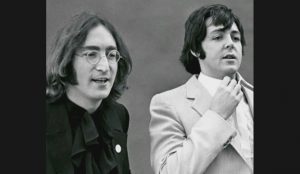Deep Purple’s Drummer Ian Paice Admits He Can’t Keep Up

via RolandChannel / Youtube
In a recent interview with Noise11.com, Ian Paice, the renowned drummer of Deep Purple, shared insights into his approach to drumming and his thoughts on the changing techniques in the industry. Despite acknowledging that he can’t keep up with younger drummers,Paice remains content with his own unique style.
Embracing the Double-Kick Beat
Paice opened up about the iconic double-kick beat in Deep Purple’s classic song, “Fireball.” He explained that when a riff requires rhythmic backup, he found the solution in utilizing double bass drums, a technique he admitted he is not particularly skilled at. However, this approach worked for him, and even after 50 years, it remains his primary use for double bass drums. Paice humbly stated,
“Well, when you’ve got a riff which needs a rhythmic backup, you find the only solution that really works. And for me, it was doing something that I’m not known for, I’m not very good at, which is the double bass drum thing. But I could do that. And, to be honest, 50 years later, that’s all I can do with two bass drums. My brain doesn’t work that way.”
At 75 years old, Paice reflected on how drumming techniques have evolved over time. While he recognizes the importance of these changes in music, he expressed his reluctance to delve too deeply into new styles. Paice shared his appreciation for the skills of young drummers and their mastery of the double-bass drum technique, but confirmed that it is not something he wishes to pursue personally. He believes that music, especially drums, must evolve and progress, but he doesn’t feel the need to be actively involved in that process, stating,
“I’m just doing a reaction video to a really great young drummer, his double-bass drum thing. And what they’re doing with it, I mean, it’s no problem, because I don’t wanna do it, but I appreciate how hard it is, what it is they do now and how it’s sort of moved on. Music, and drums especially, must evolve, must go somewhere else. But I don’t have to be involved with it, because it’s not my thing.”
View this post on Instagram
Staying True to His Style
Throughout his career, Ian Paice’s drumming has left a lasting impact on Deep Purple’s iconic tracks, including “Fireball,” “Hush,” and “Smoke On The Water.” Even as band members came and went, Paice remained the consistent force behind the drums.
Following Deep Purple’s split in 1976, Paice continued to play music and joined forces with vocalist David Coverdale to form Whitesnake. The band regrouped in 1984 for the album “Perfect Strangers” and has remained active since then.
Looking back on his career, when asked if he would consider using double-bass drums again, Paice revealed that he had no plans to do so. He explained that he utilized the technique specifically for “Fireball” because it added the necessary power to the track, complimenting the rolling riff. Paice mentioned that during his formative years, he was influenced by drummers like Louie Bellson, who also used double bass drums. However, he admitted that the mastery of the technique belongs to the talented young drummers of today.
Appreciating Younger Musicians
Ian Paice acknowledged the skills of the current generation of drummers who have refined the double-bass drum technique to an incredible art form. Nevertheless, he has always preferred to think in patterns rather than relying heavily on complex technicalities. For Paice, maintaining his own style and embracing the patterns that work for him has been a cornerstone of his drumming career.
“When I was growing up, the only guy who actually used two bass drums that I knew about was the wonderful Louie Bellson. And even he had not really what you’d call mastered it. There are some wonderful young drummers around these days who’ve got the two-bass-drum thing down to an incredibly fine art. But I’ve always preferred to have to think in patterns.”
You can watch the recent interview below:












